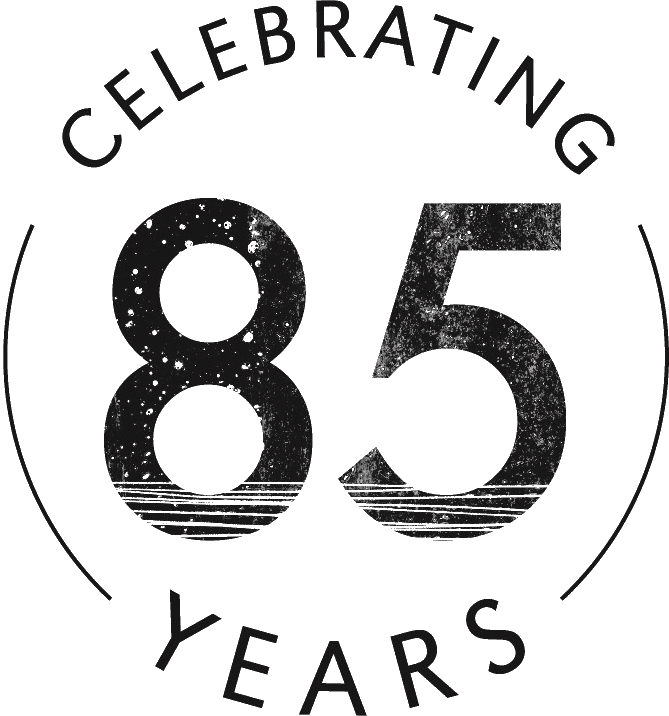Joan Eardley (1921–1963)
Joan Eardley remains an evocative and powerful figure in twentieth-century British art. Though born in England, she made her name in Scotland, capturing the grit of post-war Glasgow children and the elemental force of the Scottish coast.
Her work is deeply rooted in place, people, and landscape – three intertwined strands that shaped her life and art. We trace her journey and explore how her surroundings spurred her creativity.
Early years of Joan Eardley
Joan Kathleen Harding Eardley was born on 18 May 1921 in Warnham, West Sussex. Her early childhood was unsettled: her father, a First World War veteran suffering from shell-shock, had a breakdown when she was young, and later died by suicide. After the family farm failed in 1926, she and her mother and younger sister moved to London, where Joan’s artistic talent was recognised at school.
In 1939 the family relocated to Scotland (Bearsden, near Glasgow) to escape the bombing of London. Joan enrolled at the Glasgow School of Art in 1940. This move marked the beginning of her connection with a new landscape and new communities – a move that would define her art.
People: Glasgow and the children of Townhead
Once established in Glasgow, Eardley set up a studio in the Townhead district (an area earmarked for redevelopment). She became fascinated by the local children – the street life, the energy, the hardship. Her drawings and paintings of children are immediate, raw and deeply empathetic: she wasn’t painting sanitized childhoods, but children in constrained conditions, making their way in the world.
The children seem to be no more aware that I’m painting them than the sea and the cliffs are aware of me.
Joan Eardley
Her method was often direct: sketches on scraps of paper or sandpaper, the ragged surrounds of tenements, shopfronts boarded up, children playing with broken toys. Her interest in people was not separate from her interest in place: the urban environment of Glasgow provided both subject and context.
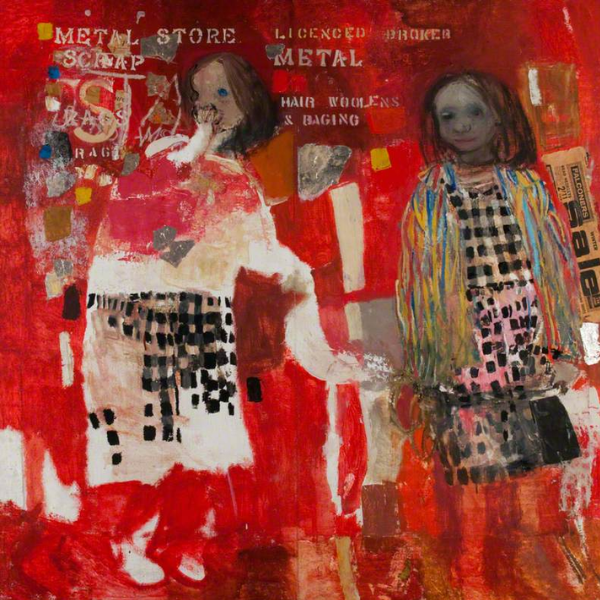
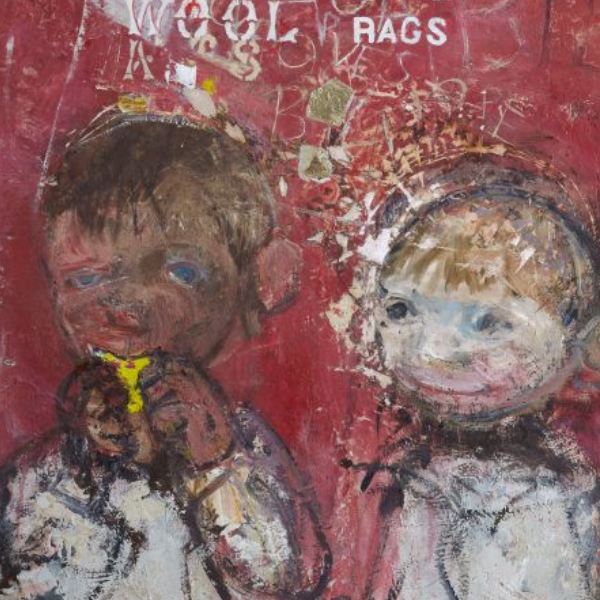
Place: Catterline and the Scottish Coast
In 1951 Eardley visited the small fishing village of Catterline on the north-east coast of Scotland – and the place changed everything for her. She was drawn to the wild sea, the steep cliffs, and the fullness of the natural world.
From then on she divided her time between Glasgow and Catterline, eventually living permanently in the village. In Catterline she confronted the elements: storms, wind, snow, rain, the vast expanse of sea and sky. Her painting method changed: she moved from small sketches to large boards, painting outdoors in all weathers, using textured media (boat paint, sand, grasses) to evoke the rawness of the place.
When I’m painting … I hardly ever move out of the village … I do feel the more you know something, the more you can get out of it.
Joan Eardley
Joan Eardley’s paintings from Catterline often depict not only nature but people’s traces in it: cottages clinging to cliffs, beehives behind cottages, the shoreline and nets of fishermen.
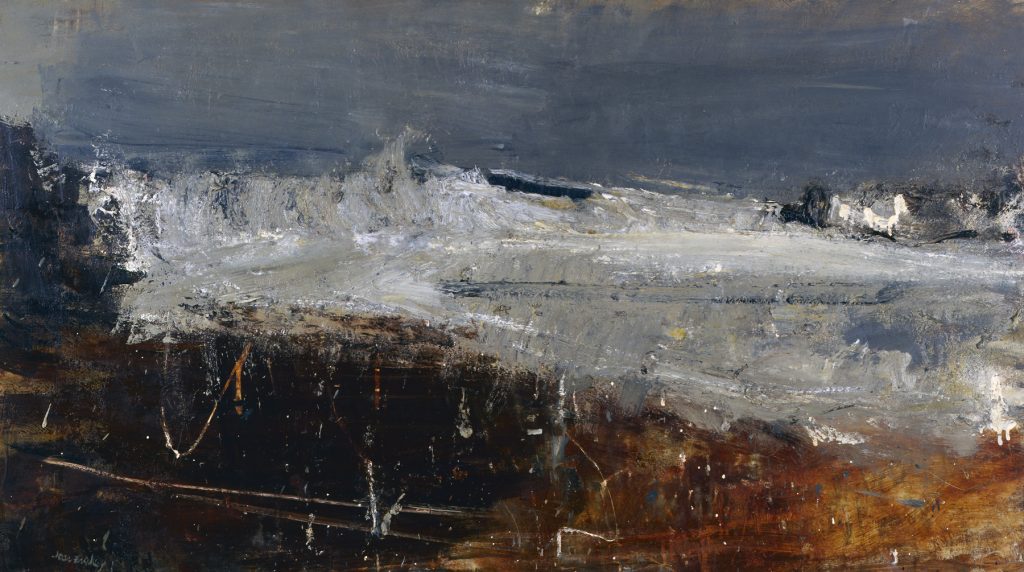
Inspiration from place, for people, and for landscape
Throughout her career, the three key influences – place, people, landscape – wove together, Eardley’s work shows how a strong sense of place can be a springboard for human-centred art and for landscape art, folded into one. Her life shows that inspiration comes when you stay long enough, watch carefully, and allow place and people to inform your work.
Later life & legacy
Eardley was elected a full Academician of the Royal Scottish Academy in 1963, the same year she died of breast-cancer, aged only 42. Her ashes were scattered on the beach at Catterline.
Despite the brevity of her career (about 15 years) she produced some 1,000 paintings and thousands of sketches. Her reputation remains strong especially in Scotland, where she is regarded as one of the major modern artists of her generation. Her paintings capture not only subject-matter but atmosphere, memory, the sense of being in a place.
Why Eardley’s Work Still Matters
- She shows how art can be rooted in specific place yet speak universally – children in post-war Glasgow, or wild seas in a remote village, both tap into human experience.
- Her method – working outdoors in all weathers, using materials scraped from the environment (sand, grasses, boat paint) – gives her work a tactile presence.
- And finally, her story is one of quiet determination: a woman forging her way in a male-dominated art world, working in challenging settings, and making art that remains fresh and resonant.
Joan Eardley’s life and art remind us that inspiration comes from immersion: from knowing place and people, from paying attention to the world around you, from embracing both the everyday and the elemental.
Learn more about Eardley’s artistic journey, exploring how her work has inspired artist tutor’s Jill Eisele’s own practice. Following Jill’s own pilgrimage to the coast of Catterline, Jill will share with you approaches and techniques on how to capture a sense of place through bold, expressive mark-making:
3-day Course: Joan Eardley – Land, Sea, People + Place
Online Course: Joan Eardley- A Painter’s Painter
Sources: DailyArt Magazine, National Galleries of Scotland, JoanEardley.com
23/10/2025
Share on
Related Stories
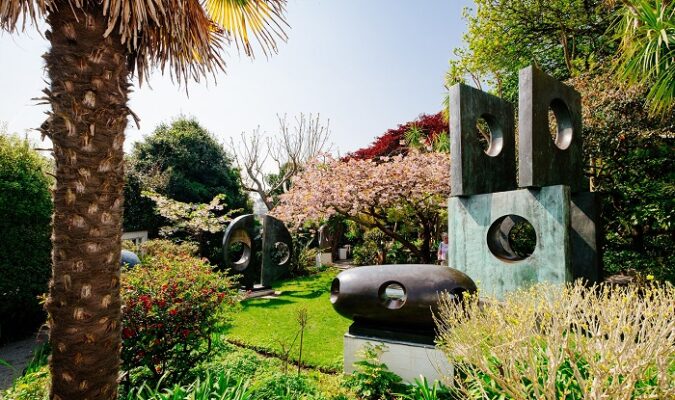
Celebrating the Legacy of Barbara Hepworth
Barbara Hepworth (1903–1975) stands as one of the most celebrated sculptors of the 20th century, a trailblazer who redefined modern art through her innovative use of form, space, and material. Born in Wakefield, England, Hepworth’s artistic journey spanned decades, during which she created an extensive body of work that continues to inspire today. Hepworth’s art...
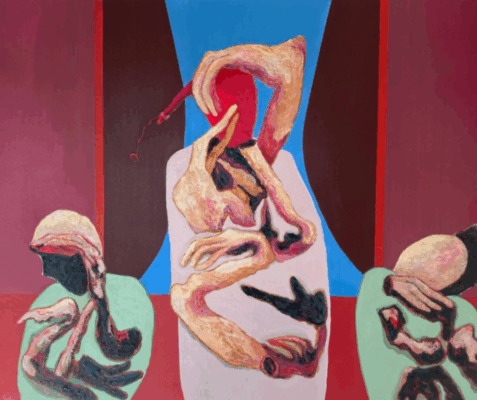
In conversation with Porthmeor Programme Alumnus, Sue Watt
We caught up with Porthmeor Programme alumnus Sue Watt to get an insight into life before, during and after the programme. Sue lets us in on her daily routine, her artistic inspiration and her upcoming show (at the time) at Penwith Gallery.
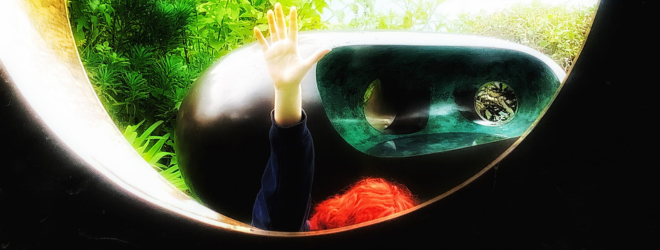
Celebrating our Future Artists
Did you know that every penny of income we receive goes directly back into teaching art and giving local youngsters the opportunity to explore their creativity? Thanks to our donations from you, and investments from our incredible funders, 2024 saw a record-breaking year for our Young Artists Programme. 2024 saw the Young Artist’s programme expand,...
